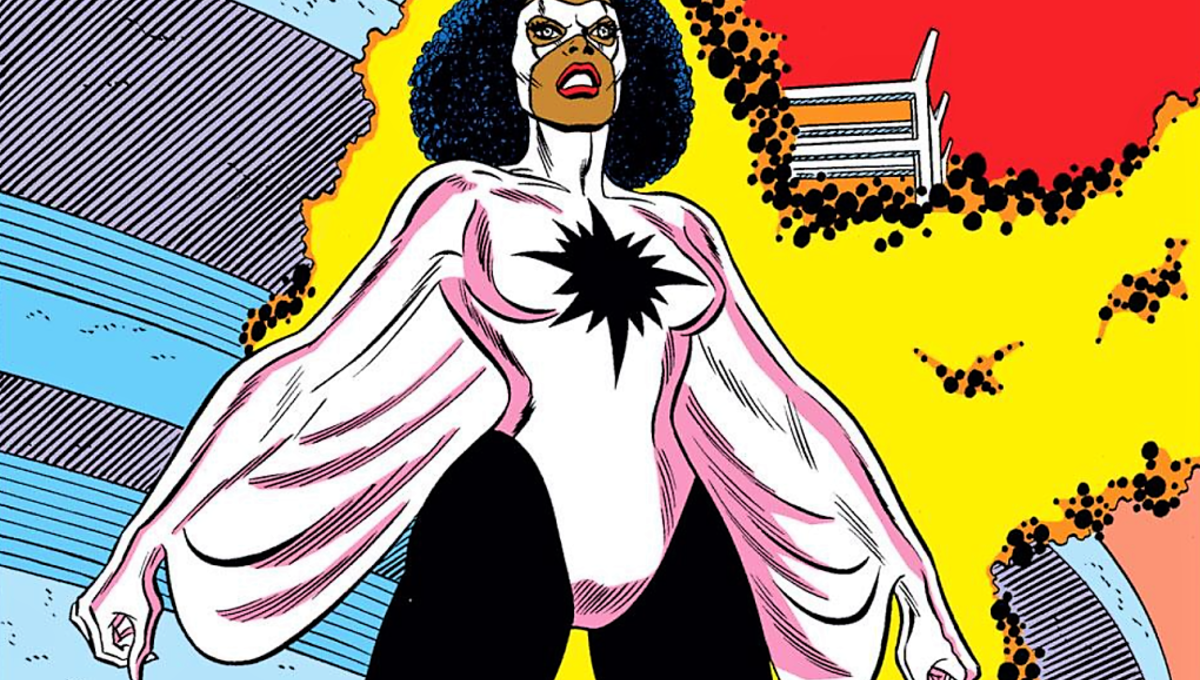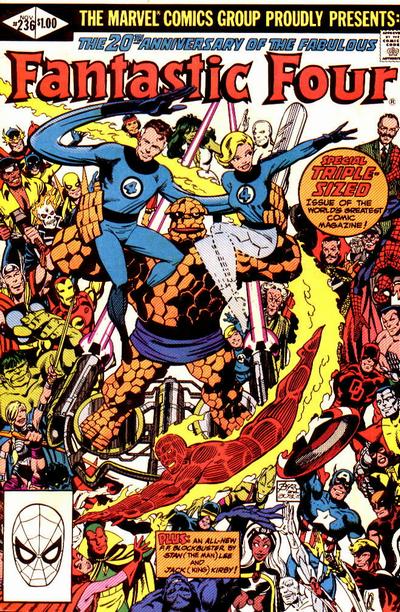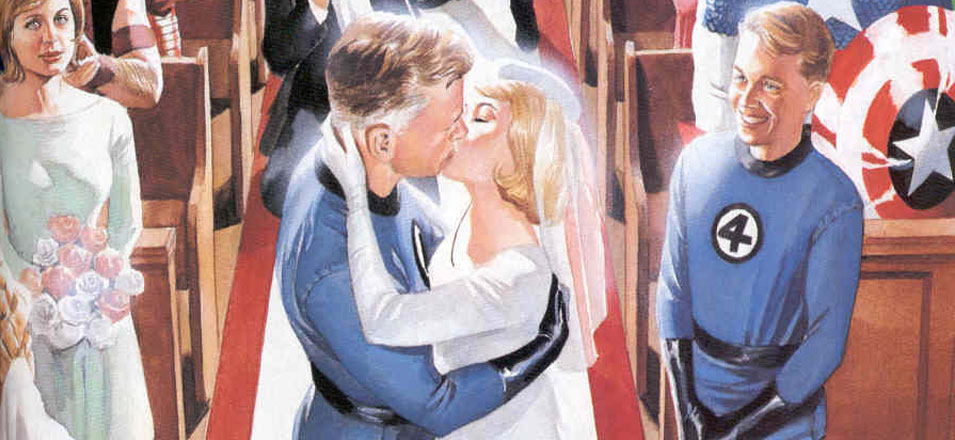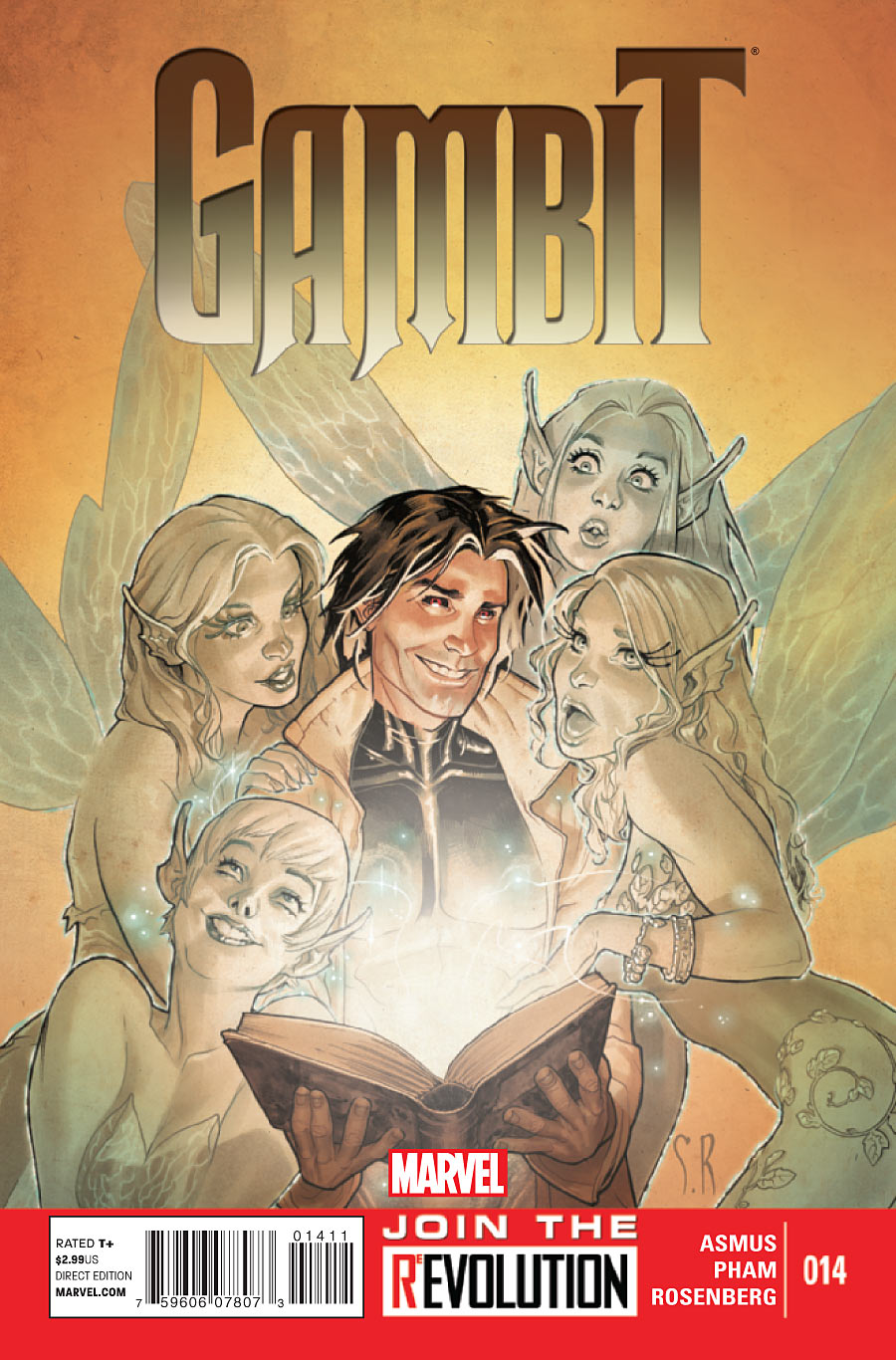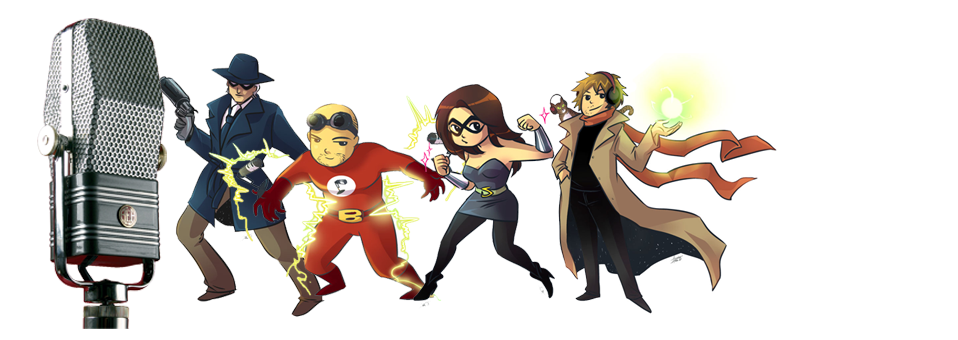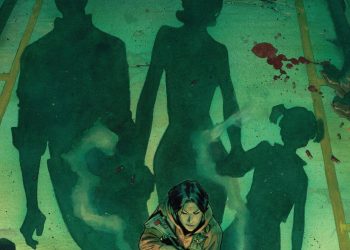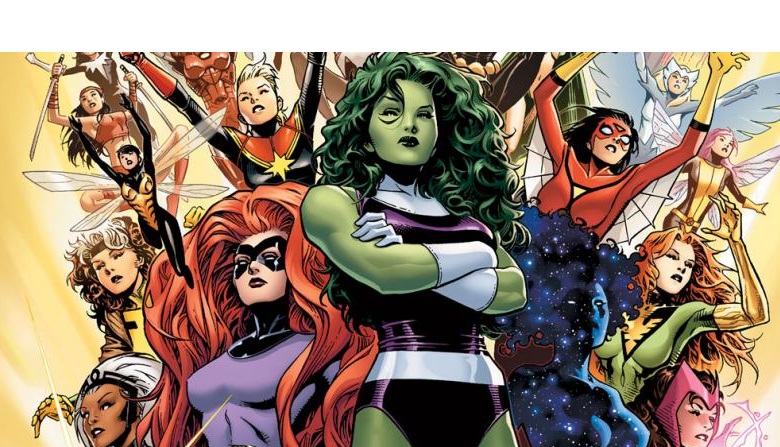
Monica Rambeau, Avenger to Ultimate: The First Female Captain Marvel
Review by KrisK
Monica Rambeau has mostly fallen into the background these days. She started out an Avenger, went on to run the team, then left it because she was fridged by a giant sea monster. The sea monster is a fridged ex lover of Namor. Monica has been on other teams since then: the Ultimates, the Mighty Avengers, and Nextwave. She even fought vampires in a post-Katrina Louisiana on an unnamed team in Black Panther. The team included T’challa, Blade, Luke Cage, and Brother Voodoo. (Part of a great run by Reginald Hudlin)
All of these spots, though, have not done much to boost her name recognition. Maybe it’s because she goes by so many names: Captain Marvel, Photon, Pulsar, Daystar, Sceptre, Spectrum, and even just Auntie Monica. A big part of it, though, could be she’s never had a solo series. She has had a couple giant-sized one shots but never a series that’s all her own. Not a single Marvel writer has written a mini-series for her. It’s disappointing, considering characters like Dark Hawk, Sleepwalker, and the Jack of Hearts have gotten at least a mini-series.
Monica is far from forgettable. Her sarcastic demeanor and take-no-caca attitude make her both inspiring and entertaining. Like the other Captain Marvel, she is more powerful than most other characters in the Marvel Universe. Her ability to manipulate different forms of energy and even become those forms of energy can take down almost anyone. During Civil War, Iron Man made a point of blind-siding Monica as soon as Ragnarök appeared, because he knew she could take out his pet Thor clone fast. Monica kicks butt.

If you aren’t familiar with Auntie Monica, she worked as an officer for New Orleans Harbor Patrol when she was struck by extra-dimensional energy by a mad scientist in Amazing Spider-Man Annual 16. Peter Parker walked by her at the Port Authority Bus Terminal, and she made his Spider-Sense tingle. He thinks she looks “stunning”, and he decides to follow her. At a distance, though, so she doesn’t think he is “some sort of pervert.” Peter doesn’t come off the best in the opening page of this annual. Since she is dressed nice in a bad neighborhood, he assumes she will get mugged. She is after she turns down one of the muggers “romantic” advances”. She takes out the muggers with ease. Spider-Man surprises her, and she sends him sailing into a trash heap. She changes into her Captain Marvel costume, and she flies away.
They flash back to three weeks prior, where we learn Monica gets her powers by investigating a Roxxon Oil Station, where they are researching extra-dimensional energy as potential weapons. In another unnecessary bit of sexualization, she is in a bikini when she talks her way aboard the station to “picnic”. This moment would not bother me if it wasn’t the third time her physical attractiveness had been remarked upon by male characters in about 15 pages. The mad scientist showing Monica around decides obliterating Fort Benning will impress the US Government, because supervillain logic. Monica slams the circuits, and the machine shoots all of the extra-dimensional energy into her. Monica flies all the way back to New Orleans, and she puts together her signature uniform out of Mardi Gras storage. She fights the bad guys and takes out the weapon.
After the fight, Spider-Man, impressed with her powers and personality, referred her to the Avengers Mansion for training. Avengers #227, she’s there, and before you know it, she’s sparring hard with Cap, giving him way more trouble than a rookie has business giving Cap. She traverses the width of the planet at unprecedented speeds, bouncing off satellites in light, microwave, and other electromagnetic forms. She quickly became an effective member of the team.
As Captain Marvel, villains often identified her as the most powerful member of the team. When Baron Zemo reforms the Masters of Evil, this time much more powerful thanks to roster numbering over a dozen, he makes sure to have a special trap for Monica.
The majority of time, massively powerful characters are often weakened in cheap gimmicks in order to take them off the table. This is not the case for Ms. Rambeau, writer Roger Stern instead devised an ingenious way to defeat Monica without ignoring her inner and outer strength. Baron Zemo and Moonstone used Blackout, a Darkforce Dimension connected villain, to entrap her in the Darkforce. This intelligent plan and its necessity to defeat the Avengers shows the power of Monica Rambeau. She escapes the Darkforce, by leaving through a portal created by another Darkforce tied character, the Shroud.
While Captain Marvel had Zemo dead to rights, she steps aside so that Captain America can battle Zemo in hand-to-hand combat. Honestly, the whole battle felt unnecessary and like an excuse to have Captain America battle the son of one of his greatest rivals for the sake of his emotions. When Steve cries afterwards, Monica comforts him and assures him, bearing the emotional weight of the team.
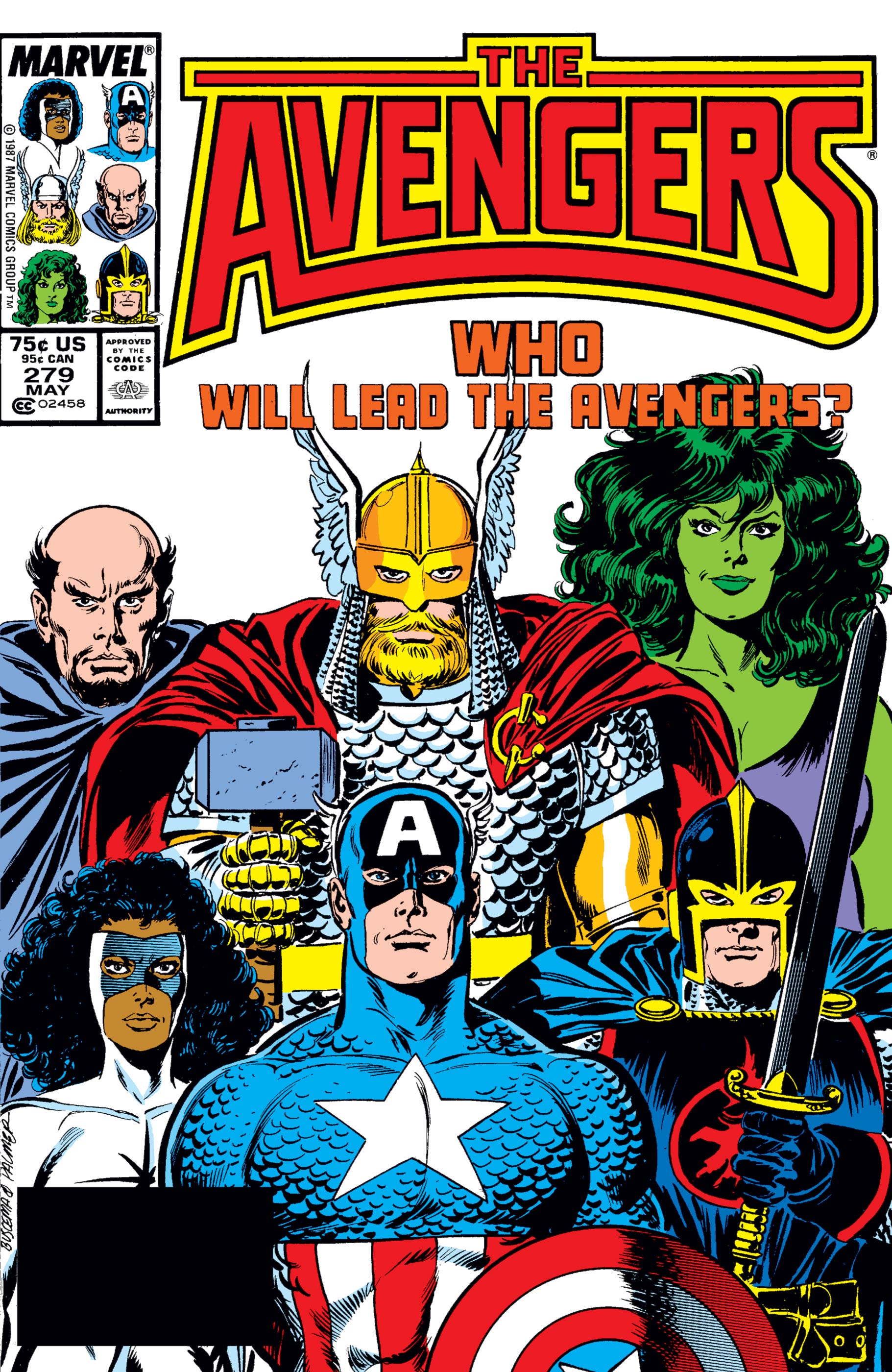
By the end of Avengers #279, she was leading the team. After the Masters of Evil destroy the mansion, put Hercules in a coma, and beat Jarvis to an inch of his life, the Wasp decides she cannot handle the responsibility of leadership. Captain America himself nominates Monica Rambeau to run the team. After Monica talks with her parents and impersonates an angel to deescalate a hostage situation, she agrees.
While carrying the burden of leadership is a common theme in team books, it picked up considerably for the female Chairwomen, Janet and Monica. Several male members of the team spend their tenures calling the leaders weak and ineffective. The worse perpetrators of the misogyny are the older characters, Thor and Doctor Druid. Doctor Druid plots actively against Monica, playing his own part in her downfall so that he could run the Avengers. His ability to manipulate people’s thoughts for his own selfish ambitions win him the Avengers Gaslighting Award.
The writing for Monica deteriorates when she leads. Stern writes her much weaker than he previously did. Monica suffers from constant exhaustion and self-doubt. While she rarely hesitated as a member of the team, she perennially fails to act as a leader. After seeing her written as such a strong and intelligent heroine, the Avengers writers, Stern, Macchio, and Simonson, irked me with their sudden failure of the character. They portrayed Monica like she was a Victorian Stereotype suffering a spell or fainting fit and needing to lay down because walking and talking at the same time is so exhausting.
Namor and his wife, Marina, join the Avengers off and on around the time Monica takes over the league. Namor actually joined earlier, but he routinely left the team to handle undersea affairs. When he returns under the leadership of CM, he brings his wife Marina. Marina, an alien hybrid, possessed much of the abilities of Namor and occasionally turned into a feral sea monster. Marina transforms even more than usual, becoming a mile-long serpent called Leviathan. At first Namor protects his metamorphosized wife, until Doctor Druid tricks her into attacking Atlanteans.
After this, Namor recognizes his duty, and he aids the Avengers. The team attempts to change her back, but the cure last but a few moments before Marina changes back to a sea serpent. Captain Marvel and Thor blast the Leviathan with all they have. Steam clouds the air. When it dissipates, Leviathan stands, but Captain Marvel vanished. Namor kills Leviathan with Black Knight’s Ebony Blade. Captain Marvel materializes later in the next issue at Hydrobase, emaciated and gray. Her parents pick her up and travel with her back to Atlanta. This abrupt end merely fridges the character, so that Doctor Druid can run the team. Monica does not reappear in Avengers for 6 years until she returns in Avengers Unplugged #5 to lose her codename to a man for a second time, but I am getting ahead of myself.
In her 1989 one shot, Monica discovered she still had her powers while fighting a supervillain named Powderkeg, who boards her shipping boat. Powderkeg , invulnerable and massive, sweated Nitroglycerin, and the sparks from his punches created explosions. (Because punches create sparks in comics) Monica realized while fighting Powderkeg, Moonstone, and their Brazilian Cartel boss, that her powers had changed. She visited Reed Richards, and they established that instead of turning into all forms of electromagnetic energy, she had super strength, invulnerability, and she could shoot blasts of energy. She flew the way Iron Man did by blasting energy from her hands. The comic ends with a Zora Neale Hurston quote: “…Now, women forget all those things they don’t want to remember and remember everything they don’t want to forget. The dream is the truth. Then they act and do things accordingly.”
Monica would go on to regain her more traditional powers and bounce around various teams. She would never fully gain her high point with the Avengers. She did receive her second one shot in 1994.
The second one saw her fight the Sons of the Serpent white supremacist group on a college campus. It was a powerful issue, with Monica quoting Audre Lorde to the father of the head bigot. In a twist, the father was a rabbi. While the story is a great one shot, nothing good is done with the character for a couple of years.
Arguably the lowest point occurs when Monica is forced to cede her name to the “son” of the original Captain Marvel, Genis-Vell. Marvel made this move, because they wanted to make another run at having a Captain Marvel series. They thought the Avengers alum couldn’t hold the same attention and love as a brand-new white guy who claimed some connection to the first Captain Marvel, via stolen DNA and mad science retconning. Monica changed her name to Photon, which made sense because she often changed to light energy.
The new Captain Marvel flopped. After the solo series failed, Genis was ripped into several different pieces and thrown into the Darkforce Dimension. In a true piece of insulting writing to Monica, before he died, he took the name Photon from her, too, forcing her to go to a third name, Pulsar. To force Monica to give up her name twice, the second time for no discernible reason, belittled the character and her place in the Marvel Universe.
Her next high point would be as head of the Warren Ellis superhero team, Nextwave, Agents of H.A.T.E. Nextwave remains one of the most unique and quirky experiences in Marvel comics. Warren Ellis writes a mature, hilarious superhero story, where Monica leads the team and continuously brings up her Avengers time. The team she leads learns, minutes before the series starts, that the agency they work for is a terrorist organization. They steal a ship, become pirate superheroes, and they take on the evil corporation behind it all, The Beyond Corporation. Monica shines as the leader. It is a shame that the series was made to have never happened for a time. Monica carries the “made it up” label for a few years, until she fights the Beyond Corporation with the Mighty Avengers.
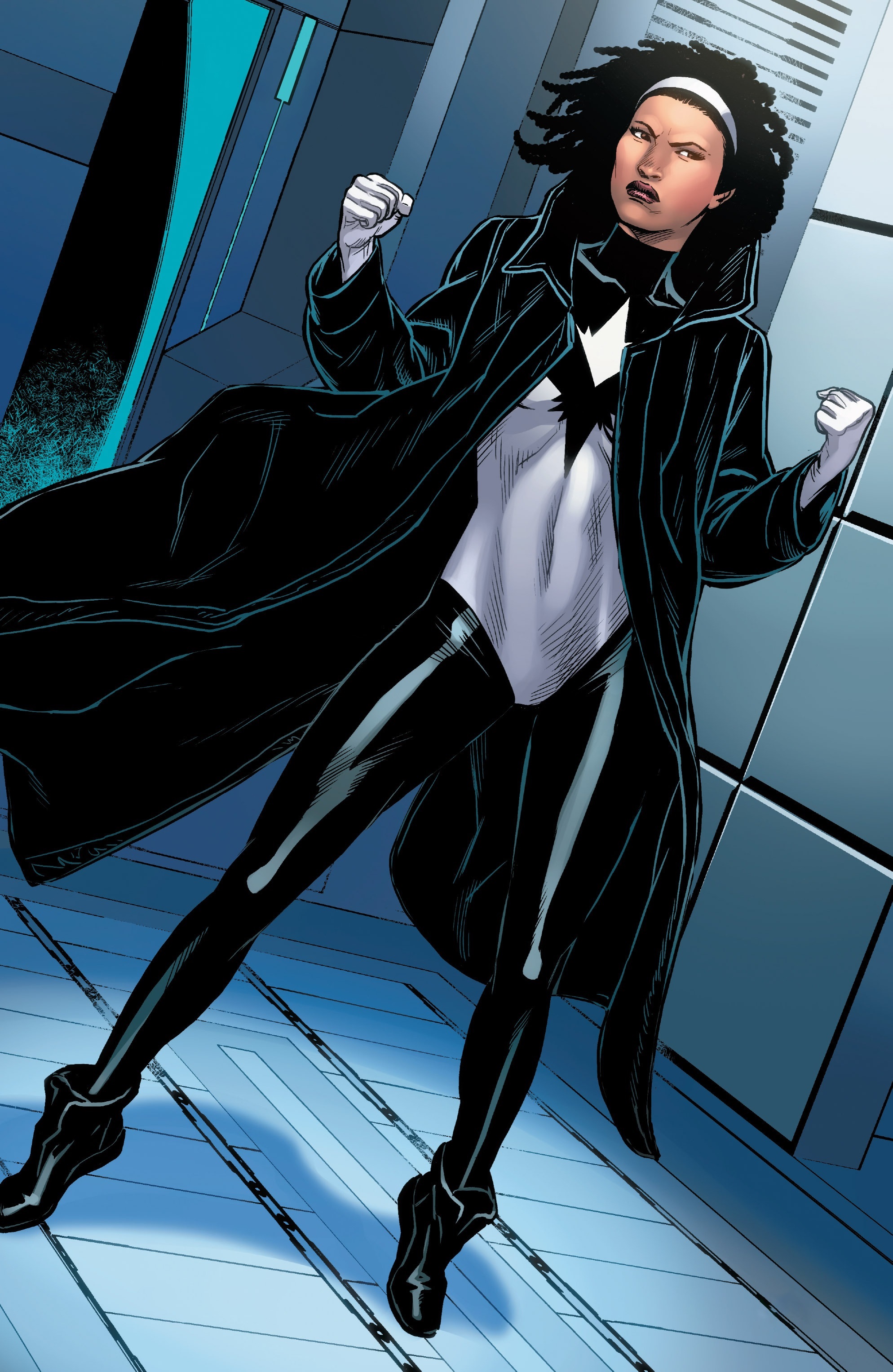
Having Monica judged afterwards and having all the reputation she gained lost once again is a disappointing theme in the character’s history. She wins the battles, she saves the day, and she does it with an inspiring fierce independence. But Monica’s story adds up to tragedies and failures, similar to Carol Danvers’ story.
After Nextwave, Carol fought with Sam Wilson: Captain America and the Mighty Avengers. The Beyond Corporation returned, and it was up to the Mighty Avengers to handle it. This story arc gave Monica back some of her agency by showing she hadn’t made up everything with Nextwave. It returned her credibility, and more importantly, her confidence in herself. They beat back the Beyond Corporation just in time for the last days of the Marvel Universe and the Secret Wars.
After this, Monica fights the cosmic level threats in the Ultimates series. Ultimates, written by the uniquely talented Al Ewing, comprised of Monica Rambeau, Carol Danvers, Blue Marvel, Black Panther, and America Chavez. They were government sanctioned, thanks to Carol, but not necessarily trusted by all in the National Security Complex. In the series, the team fights Thanos, Proxima Midnight, Anti-Man (a Blue Marvel villain), and they assist Galactus, the Life Bringer. This team dissolved once, after the second Super Hero Civil War, but the heroes fought together again unofficially.
This iteration of Monica “Beaucoup Powerful” and going by Spectrum still shines. She fights for what she believes in without hesitation, and her intelligence glows off of her. Monica starts a romantic relationship with the Blue Marvel, aka Doc Adam Brashear. This relationship surpasses most comic book relationships due to its maturity. They care about each other, but they have integrity and neither changes who they are. They support each other in such a refreshing way, particularly compared to some other relationships where constant unnecessary drama reigns. Neither is petty, and they never lose their respect for themselves or each other. To have two powerful “older” black superheroes together speaks wonders. They create arguably the most powerful Power Couple in Marvel Comics.
Most recently, Monica joined Carol Danvers’ Alpha Flight to protect the planet from extraterrestrial threats. While she is written well, she doesn’t get much in terms of dialogue or development.
With the release of the Captain Marvel movie, hopefully some change is underway. Seeing a young Monica in this MCU prequel was a definite highlight of the movie. Akira Akbar lit up the screen as Monica. She took all of Monica’s tenacity and strength and combined it with a pure optimism. She feared nothing, though aliens surrounded her, and her character translates well to a future superhero. Carol could definitely hand the torch over to Monica if the MCU is around 20 movies from now. I hope we see more of Monica in the future Captain Marvel movies, and I hope the increased awareness of the character means she will be allowed to get more spotlight in the comics.
Monica, along with Storm and Misty Knight, is one of the few black matriarchs of the Marvel community. Storm spends all of her time in the mutant corner of Marvel. Misty generally deals with street level Heroes for Hire work. As an alum of so many teams, she is perfect as a role model for young heroes. She has fought cosmic world ending threats and garden variety racist hate groups. She should be used as a veteran superhero much more often. Few can boast her level of experience. But instead of serving as a pillar of the Marvel community, they treat her like a toy to pull out of the toy box every few years and put back away after a few issues. Maybe one day, she will even get a miniseries like Death’s Head.

